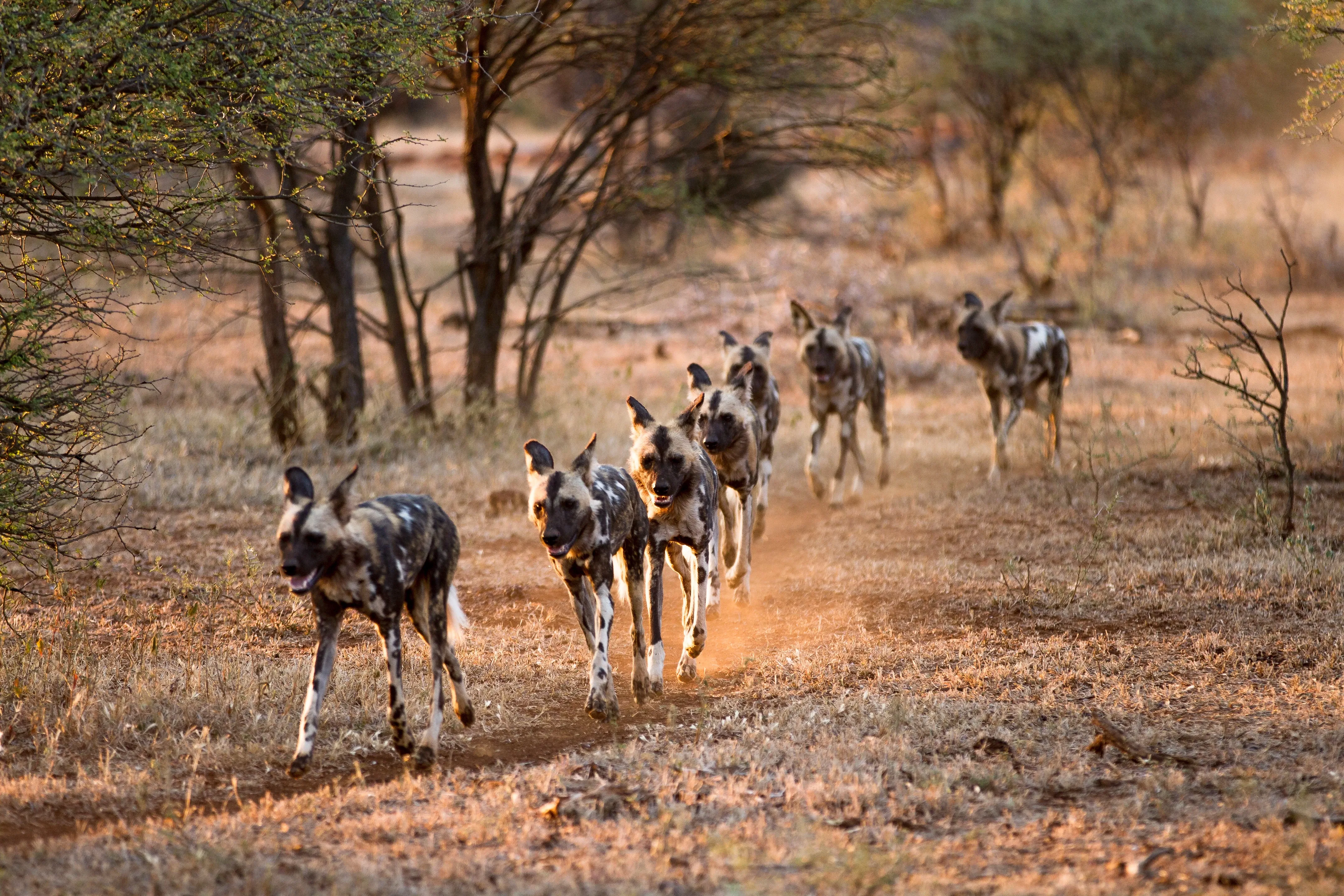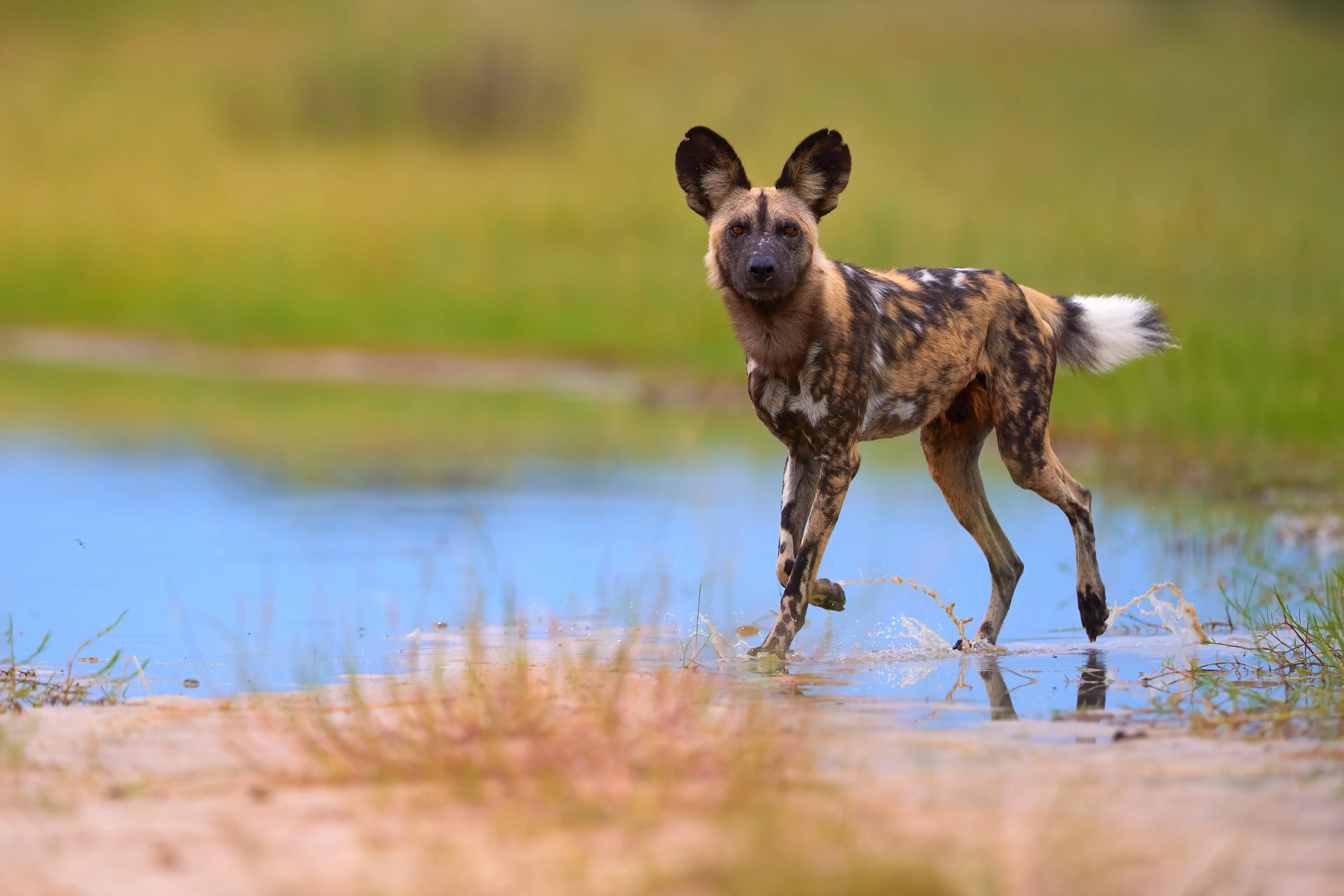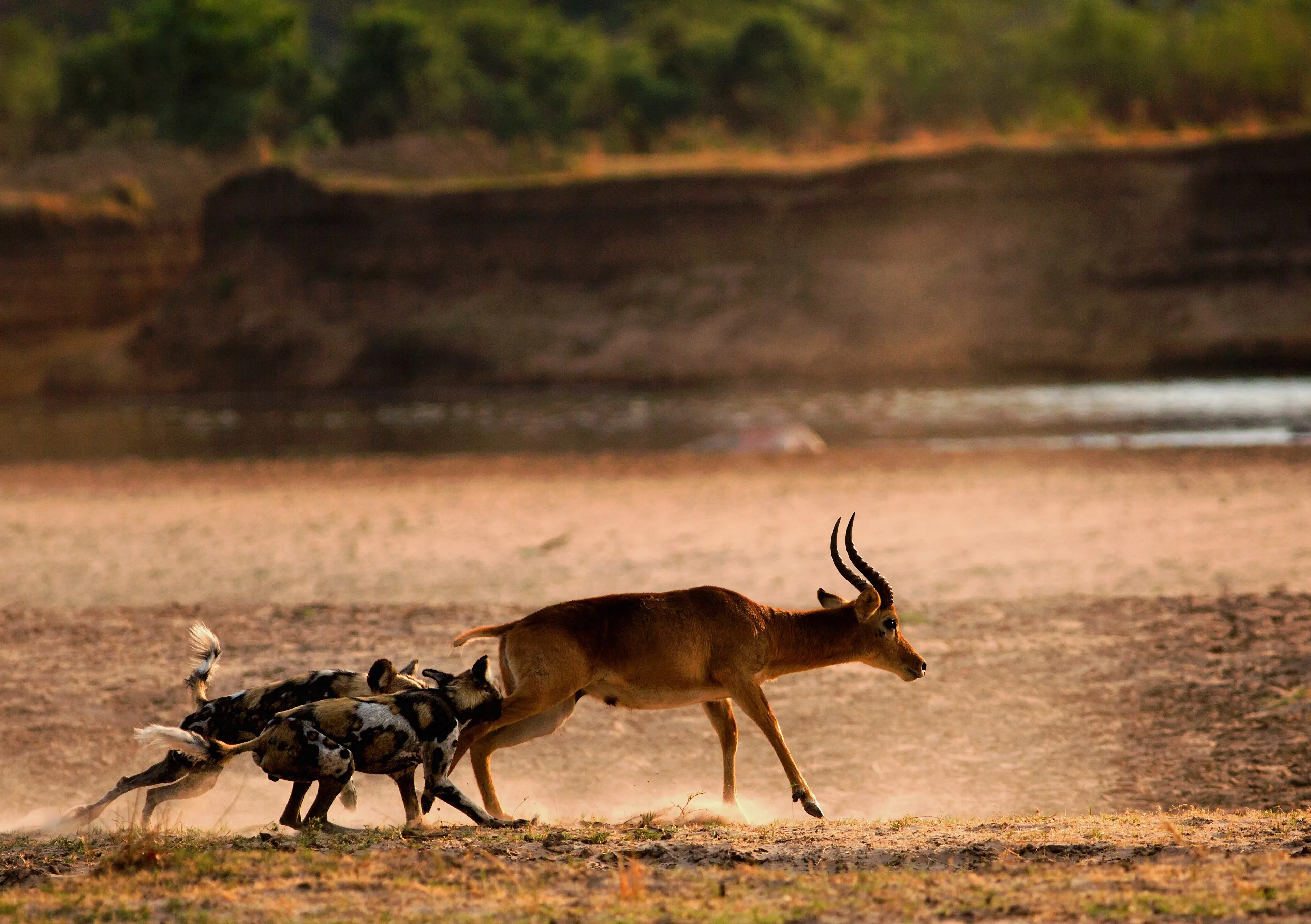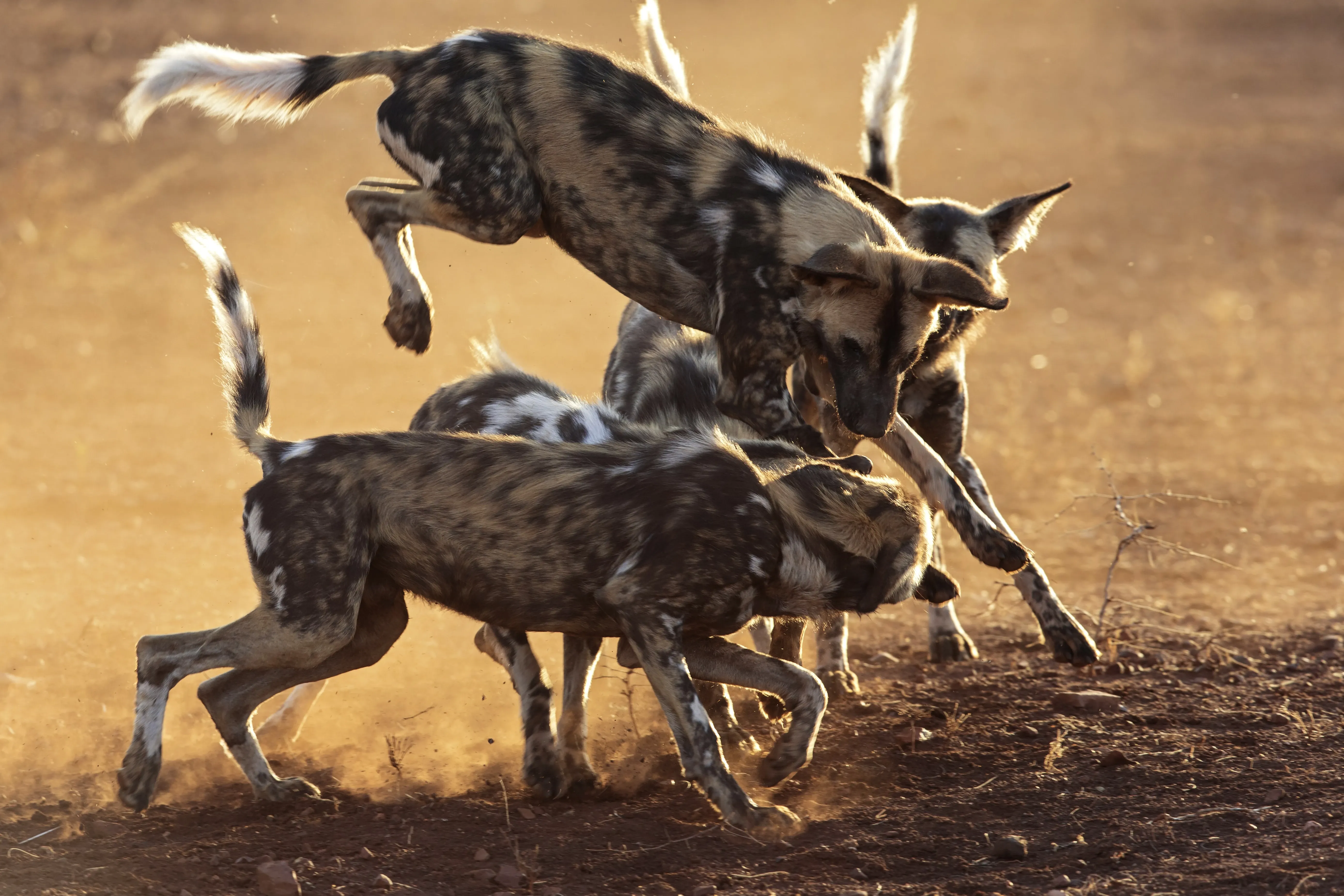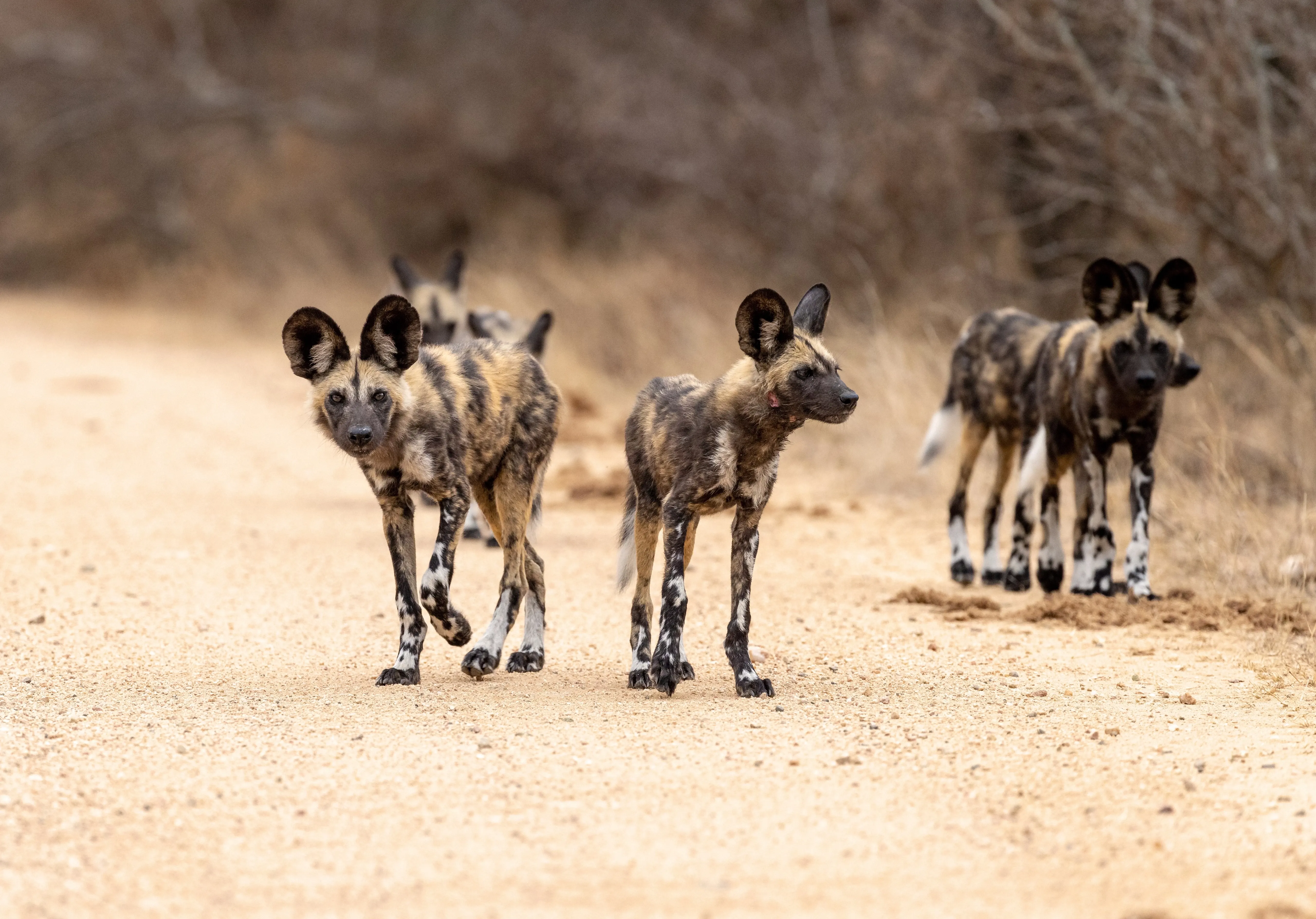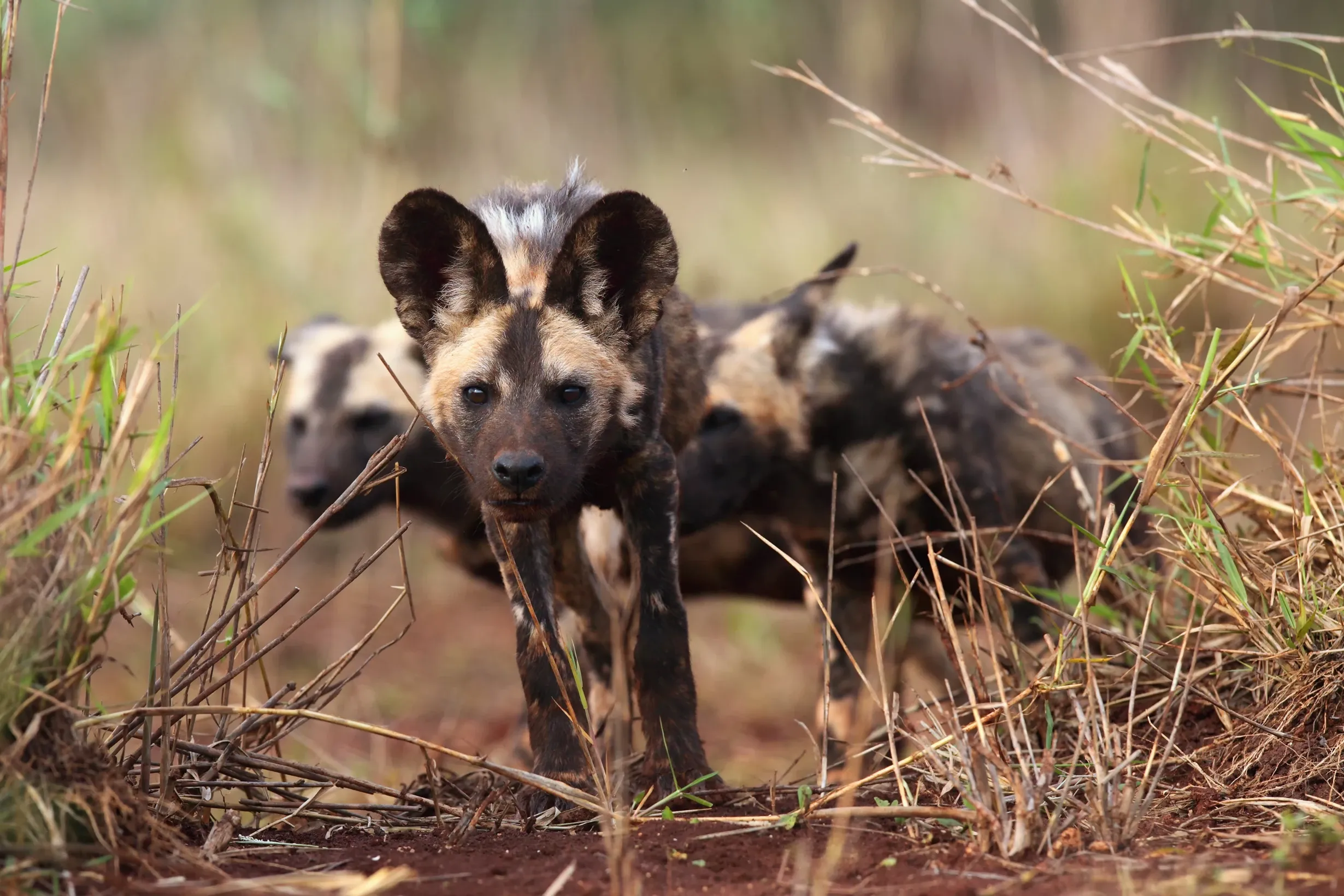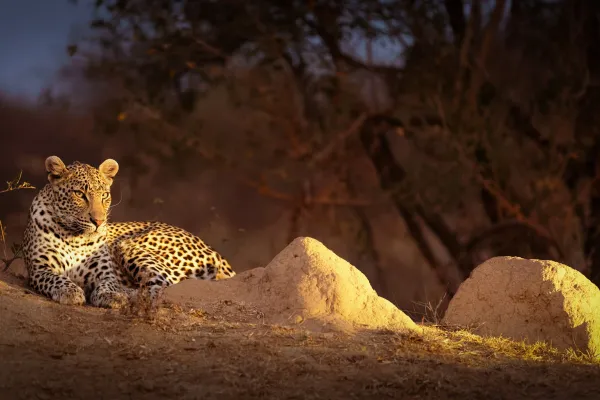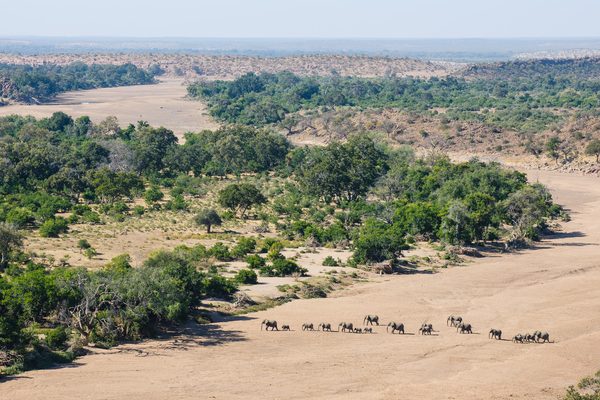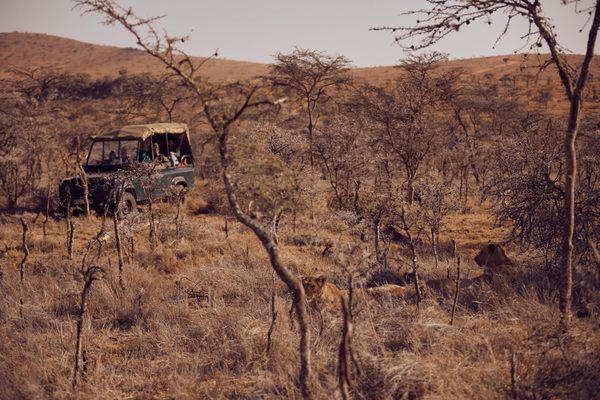Species Introduction: African Wild Dog
The extraordinary African wild dog, Africa's largest canid species, stands as a symbol of unity and resilience. Once found in most of Sub-Saharan countries, now these elusive predators are confined to fragmented habitats, struggling against the tide of habitat loss and human-wildlife conflict, yet their enduring spirit continues to echo across the African wilderness.
The African wild dog (Lycaon pictus) not only represents unity and resilience but also highlights the critical need for conservation efforts. This need is reflected in the contentious history surrounding their name.
The scientific name Lycaon pictus translates to "painted wolf," a reference to their distinctive markings. However, in the late 19th century, European settlers in Africa began calling them "wild dogs" as a pretext for their extermination. During the early 20th century, many European farmers who had introduced European farming practices in Africa faced livestock losses. These farmers, unfamiliar with local wildlife and often mistaken about their predators, blamed the diurnal wild dogs rather than the nocturnal leopards and hyenas, which were less visible.
Without the benefit of scientific understanding, farmers erroneously believed that these vividly marked animals were domestic dogs gone wild and labelled them "wild dogs." Over the span of a century, the African wild dog population plummeted from an estimated 500,000 to just 6,600, according to the last IUCN census in 2012.
Today, the African wild dog has lost 90% of its original habitat and is classified as endangered by the International Union for Conservation of Nature (IUCN). Of the remaining 6,600 African wild dogs, only about 1,400 are adults capable of reproduction.
Discover the fascinating behaviors of the African painted wolves and understand why it is crucial to protect this iconic keystone species. Join us on a journey to learn more about these remarkable animals and find out how you can help ensure their survival.
Fact sheet African Wild Dog
- Name: African Wild Dog, Painted Wolf
- Scientific name: Lycaon pictus
- Order: Predator (Carnivora)
- Family: Dog-like animals (Canidae)
- Tribe: Canini
- Characteristics: distinctive, multicoloured coat of black, white, brown and beige, large round ears, strong slender legs
- Size: Shoulder hight between 65 - 75 cm
- Weight: 18 to 36 kg
- Origin: arid Sub-Saharan Countries
- Habitat: Dense Forest to open plains
- Home range: 200 - 2000 square kilometres
- Diet: Carnivorous, from small mammals to Wildebeest
- Social Behaviour: African Wild dogs live in a pack led by an alpha pair
- Endangerment Status: endangered
- Life span: 10-12 years
Typical characteristics of the African wild dog
The painted wolf’s most striking characteristic is its vibrant, irregularly patterned coat. Each individual sports a unique blend of black, white, brown, and beige patches that create a distinctive mosaic. This colourful fur not only provides effective camouflage in their natural habitats but also helps pack members identify one another as each pattern is as distinctive as a humans fingerprint. The white tip of their tail helps pack members and especially the puppies to follow each other through dense woodland.
Another notable feature is their large, rounded ears. These prominent ears are crucial for enhancing their acute sense of hearing, which aids in communication and locating prey. Additionally, researchers are currently trying to figure out if the large ears help dissipate heat, playing a vital role in regulating body temperature in their warm environments.
The African wild dogs are built for endurance, with long, slender legs that support their exceptional stamina and speed. This physical adaptation is essential for their hunting strategies, allowing them to cover large distances and chase prey efficiently. Their non-retractable claws provide necessary traction for running.
Their face is characterized by a broad, short snout and large, expressive eyes that are typically amber or brown. This facial structure contributes to their highly developed sense of smell and adds to their unique appearance.
Diet of African Wild dogs
African wild dogs are highly efficient hunters, and their diet composes a wide range of animals from small mammals and birds to antelopes such as Impala or Kudu or even a blue Wildebeest. One pack in Zimbabwe managed to specialize themselves to hunt Chacma Baboons. African wild dogs mostly hunt the old and weak animals, and are therefore vital key stone species.
What sets African painted wolves apart from other predators is their exceptional hunting strategy, which relies on teamwork, endurance, and coordination. Hunting in a pack allows them to take down prey much larger than a single dog could manage. Unlike other predators that rely on stealth or brute force, African wild dogs use their incredible stamina to exhaust their prey. They will often chase it for several kilometres, taking turns leading the pursuit, until the prey is too tired to continue. The African wild dogs can keep their speed between 60-70 km/h (37 - 44 mph) up during the pursuit.
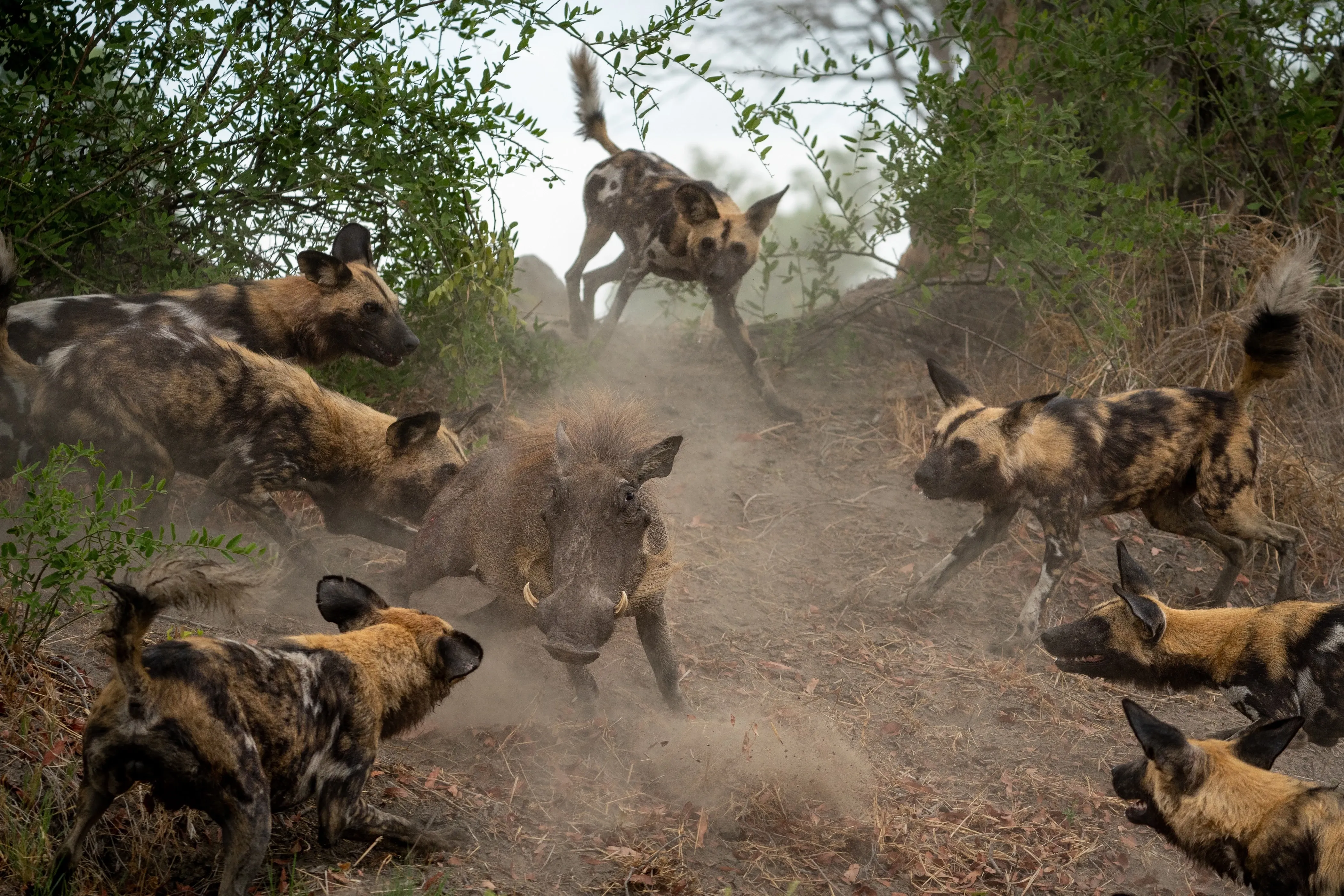
Once the prey is caught, the pack exhibits a unique and highly organized feeding behaviour. They begin eating while the animal is still alive, which minimizes the time spent at the kill site and reduces the risk of scavengers or other predators stealing their meal. As this may sound brutal in a human’s emotionally-clouded brain, this technic is more humane than the suffocation method of big cats such as lions and leopards, as the prey dies rather quickly of shock and blood loss, then suffers over a long period.
As African wild dogs are highly sociable animals, they will bring the food back to the den for their puppies and their babysitters. Instead of carrying the carcass to the den side, leaving a trace, they consume the meal quickly and regurgitate it back at the den.
This cooperative hunting technique makes African wild dogs some of the most successful predators in Africa, with a hunting success rate of around 80%, significantly higher than that of lions or leopards.
Exceptional communication skills in African Wild dogs
African wild dogs are known for their exceptional communication skills, which are crucial for maintaining pack cohesion and coordinating their highly effective hunting strategies. These dogs rely on a complex system of vocalizations, body language, and even scent marking to communicate with each other, ensuring the pack operates as a unified and efficient team.
Vocal communication is one of the most distinctive aspects of their interactions. African wild dogs use a variety of sounds, each serving a specific purpose. High-pitched twittering and squeaks are often used during greetings or to express excitement, especially when the pack is about to hunt. These sounds help strengthen social bonds and foster a sense of unity within the pack. They also use a unique "hoo" call, a long-distance contact call that can be heard over several kilometres. This call is used to locate pack members when they are separated, ensuring that the group stays together even in large, open landscapes.
During hunts, communication is key to their success. The dogs use short barks and growls to signal changes in strategy or to direct other pack members, allowing them to coordinate their movements and execute complex hunting tactics. This vocal coordination is complemented by body language, such as tail wagging, ear positioning, and facial expressions, which convey important information about the mood or intentions of each individual.
Scent marking also plays a role in communication, particularly in establishing territory and identifying pack members. The painted wolves will urinate or defecate at specific locations to leave scent markers, which communicate their presence to other packs and help maintain their territory.
»The threats are many. Unless we take action to address these threats, painted dogs will become extinct in our lifetime.«
Distribution and habitat of Wild dogs
Historically, these highly adaptable animals were found throughout much of the African continent, from the southern regions to the Sahara's outskirts. However, their range has drastically diminished due to human activities, such as habitat loss, hunting, and disease.
Today, African wild dogs are primarily found in fragmented populations across eastern and southern Africa. Key strongholds include parts of Botswana, Tanzania, Mozambique, Zambia, Zimbabwe, and Namibia, where conservation efforts have been most effective. Botswana's Okavango Delta, Zambia’s South Luangwa National Park, Zimbabwe’s Mana Pool National Park and South Africa's Kruger National Park are among the most significant habitats for these animals, offering large, protected areas where packs can roam freely.
Their preferred habitats includes the savannas vast, open landscapes, dotted with scattered trees and shrubs, which offer an ideal balance of visibility and cover. While the woodlands offer protection from the harsh sun and larger predators. This is where the wild dogs often will built their dens. They prefer arid areas such as the Kalahari deserts outskirts, but evidences also have been found, that the painted wolves once occurred along the coast lines of Kenya. African wild dogs prefer areas with a mixture of open plains and dense brush, which provide both visibility for hunting and cover for resting.
They are also highly dependent on large home ranges, often exceeding 1,500 square kilometres (580 square miles), as their hunting strategy involves covering vast distances in search of prey. This need for extensive space makes them particularly vulnerable to habitat fragmentation, as smaller, isolated reserves cannot support the large, roaming packs necessary for their survival. Due to habitat loss those wonderful animals are literally speaking running out of space.
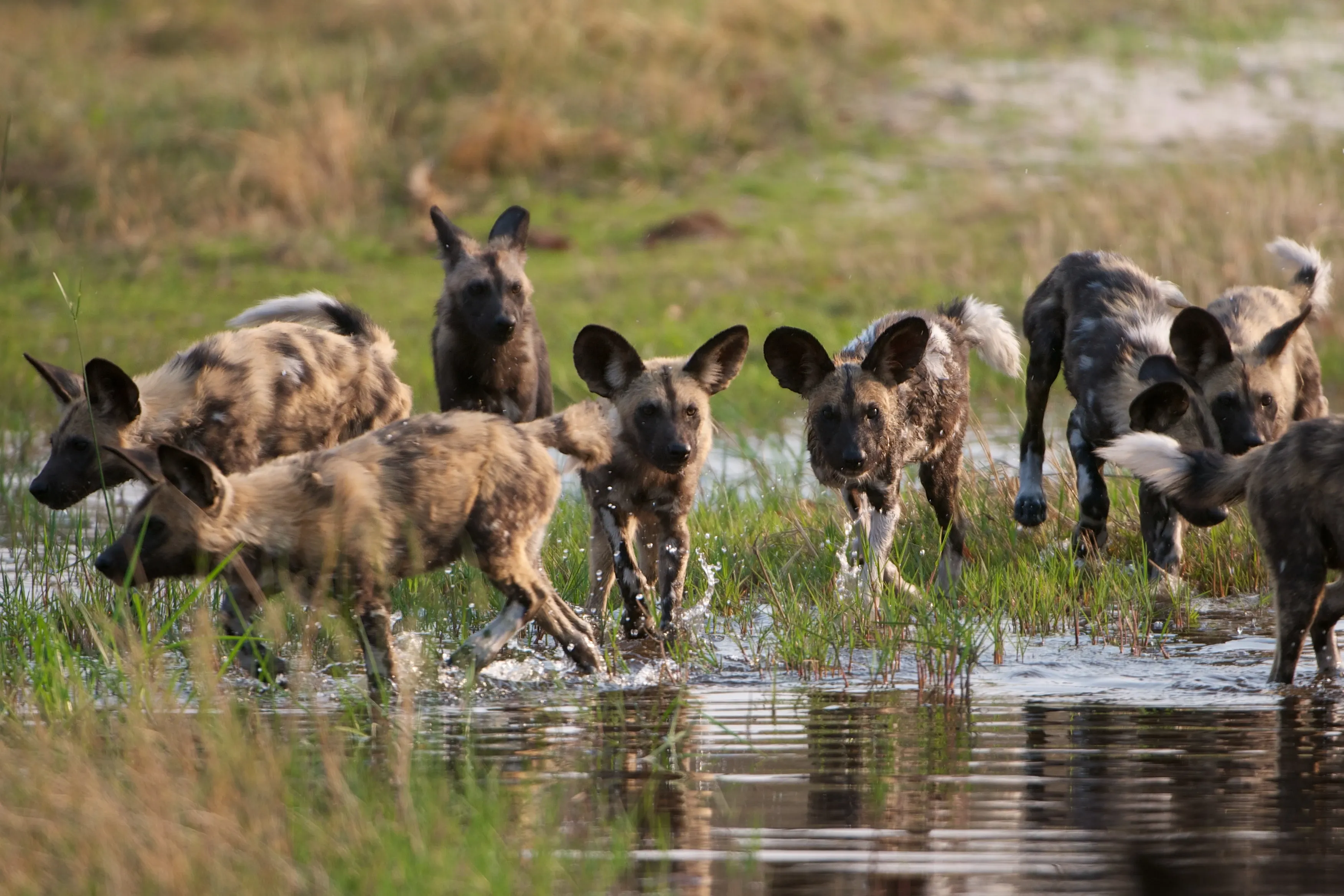
The behaviour of African Wild dogs
African wild dogs exhibit highly complex and cooperative social behaviour, making them one of the most socially intricate carnivores in the animal kingdom. Their packs typically consist of 6 to 20 individuals, though some packs can grow even larger. These packs are tightly knit, with a strong hierarchy led by a dominant breeding pair - called alpha pair. The alpha pair stays monogamous throughout their lives.
Pups are central to the pack's social life. After birth, they remain in the den for the first three months, cared for by both parents and other pack members. African wild dogs have a unique "babysitter" system, where one or more adult dogs stay behind to guard and care for the pups while the rest of the pack hunts. This system ensures that the pups are safe, while the hunting pack is away. The pack's social care extends to older or sick members. African wild dogs do not abandon these individuals; instead, they adjust their pace during hunts and share food with them to ensure they remain part of the pack. This care for the vulnerable highlights their strong social bonds and cooperative nature.
When it comes to dining, African painted wolves are remarkably egalitarian. After a successful hunt, the entire pack gathers to share the meal, ensuring that every member, including pups, gets enough food. Pups are often given priority, and adults will regurgitate food for them and their babysitters at the den side if needed. This communal feeding helps strengthen bonds within the pack and ensures the young receive adequate nutrition. The pack's social structure is crucial for their survival and hunting success.
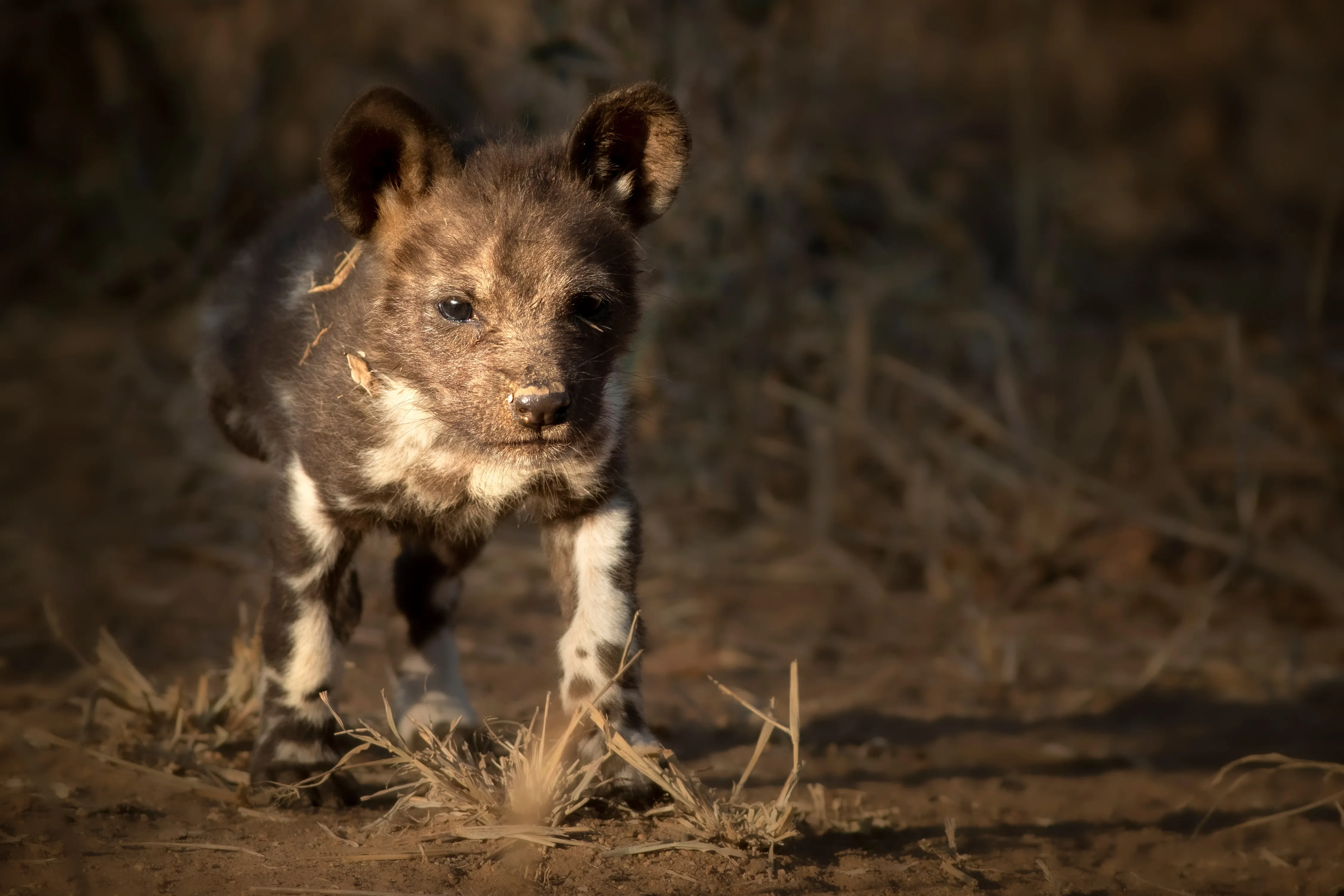
Conservation status of the African wild dog
The African wild dog, also known as the painted wolf, is listed as "Endangered" on the International Union for Conservation of Nature (IUCN) Red List. With fewer than 7000 individuals remaining in the wild, the species faces a high risk of extinction. The population of African wild dogs has been steadily declining due to factors such as habitat fragmentation, human-wildlife conflict, poaching, and the spread of infectious diseases like rabies and canine distemper.
Once widespread across sub-Saharan Africa, African wild dogs now occupy only about 7% of their historical range. Their remaining populations are largely confined to isolated areas, particularly in southern and eastern Africa, where they are vulnerable to further declines. Painted wolves have a significant value as a keystone species, by keeping the population of small mammals and antelopes at bay.
Conservation efforts are focused on protecting existing populations, restoring their habitats, and mitigating human-wildlife conflicts. The species’ endangered status highlights the urgent need for these conservation actions to ensure the survival of this unique and ecologically important predator.
Some of the conservation efforts are:
- Establishment and preservation of protected reserves
- Development of ecological corridors to connect fragmented landscapes
- Implementation of anti-poaching measures and systematic removal of snares
- Construction of secure, predator-resistant livestock enclosures
- Community engagement and educational outreach initiatives
- Strategic disease surveillance and control programs
- Comprehensive research and continuous monitoring endeavours
Are you interested in learning more about the protection and conservation of Wild Dogs? Then maybe our Volunteering in Species Conservation project in Zululand is something for you.
Interesting facts of Wild Dogs
#1 How do Wild Dogs decide they are going on a hunt?
A study back in 2017 that was undertaken in Botswana has shown that African wild dogs vote within their pack to decide if they are going on a hunt or not. This is done with a short “sneeze”. If one of the alpha pair “sneezes” first and initiates the hunt, less votes are necessary than if a lower ranking member tries to initiates a rally.
#2 Why do African wild dogs smell so bad?
African painted wolves, like spotted hyenas, do not clean themselves or other pack members very often. Unlike social cats such as lions, which use grooming to strengthen their pride, wild dogs rely on different methods to maintain their pack cohesion. Even they don’t eat putrid meat, they frequently become covered in blood and other bodily fluids while eating their prey alive.
Wild dogs are known to also roll themselves in different smelly substrate such as other animal dung to cover their own or to communicate, while leaving scent marks, with their pack members. To clean themselves, they may walk through dense vegetation or high grass, bathe in puddles, or roll in dust. During the rainy season, a good downpour assists with their cleaning.
#3 Are wild dogs feral domestic dogs?
African wild dogs are not domestic dogs gone wild, but rather a distinct species with their own unique evolutionary adaptations. While both African wild dogs and domestic dogs share a common ancestor, they have diverged significantly over thousands of years. Domestic dogs belong to the genus Canis, which they share with gray wolves, coyotes, and jackals.
In contrast, African wild dogs belong to their own genus, Lycaon, which means "wolf-like." A more accurate term for them, reflecting their unique identity and what they were previously called before the name was changed in everyday language, is "African-painted wolf." Despite their shared ancestry, African wild dogs and domestic dogs are separate species with different behaviours, ecological roles, and adaptations.
The future of African wild dogs
As one of Africa's most enigmatic predators, these animals embody the spirit of the African wilderness, weaving through the savannas in tightly-knit packs, their bonds as strong as the winds that sweep across the plains. Yet, this future is fraught with challenges. The encroachment of human development, the silent threat of disease, and the ever-present dangers of poaching have driven their numbers to critically low levels.
But all is not lost. The story of the African wild dog is one of hope, resilience, and the possibility of renewal. With concerted conservation efforts, from the protection of their remaining habitats to the reintroduction of packs into new landscapes, there is a chance to secure a future where these remarkable creatures once again flourish. Their survival is a reminder of the delicate harmony of our ecosystems, and by safeguarding them, we preserve a piece of the wild that speaks to the very essence of Africa.
In saving the African wild dog, we do more than protect a species—we honor the intricate web of life that sustains our planet, ensuring that future generations will marvel at the sight of these painted wolves, as they roam free under the vast African skies.
Sign up for the newsletter
By clicking on “Subscribe now” I will subscribe to the Conscious Explorer newsletter with all the information about mindful travel. Information on the success measurement included in the consent, the use of the shipping service provider MailChimp, logging of the registration and your rights of revocation can be found in our privacy policy.

